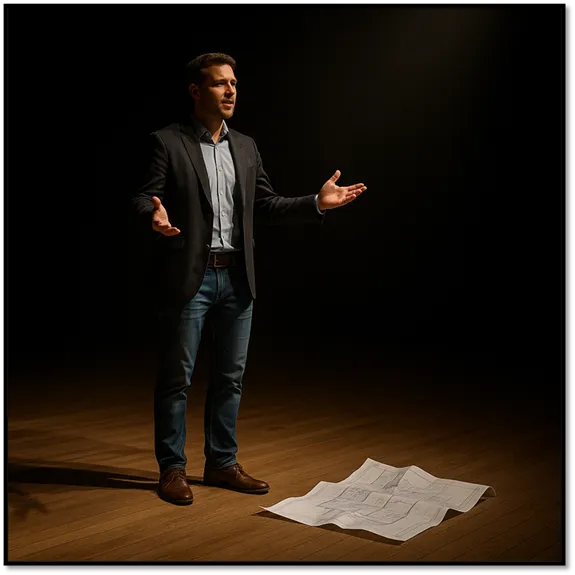From Blueprint to Improv: Rethinking Leadership Development for the AI Era
September 18, 2025
Blogs
The traditional “build” model of leadership, where organizations carefully groom leaders over long careers in stable environments, no longer matches today’s reality. Employees change jobs more often, teams form and dissolve quickly, and AI agents are becoming part of the workforce. For organizations, this means leadership development cannot be a rigid ladder. Rather, this approach must become a dynamic, adaptive system.
A critical challenge is that a team leader’s responsibilities are fundamentally different from those of a strategic leader. A team leader guides people face-to-face; a strategic leader steers through vision, systems, and culture. In the past, organizations bridged the gap between team leadership and strategic leadership slowly, adding responsibility step by step as leaders climbed the ladder. But with careers now more fluid and tenures shorter, a leader’s patient ascent is no longer practical. Organizations must find ways to accelerate growth, giving leaders glimpses of higher-level challenges and mindsets, even if these leaders don’t hold the seat for long.
Here are five considerations organizations must address if they want their leaders to thrive in this new reality.
Flexible Pipelines.
The old steady climb from frontline manager to executive is giving way to a more fluid journey. People move between roles and teams more frequently, so organizations can’t depend on long, linear career paths to develop future leaders. Instead, organizations should design pathways that give leaders broad experiences inside the company, rotations across functions, stretch assignments, and opportunities to lead cross-disciplinary projects. The goal is to build resilience, adaptability, and the ability to influence across boundaries, whether that means coordinating across departments or leading hybrid human–AI teams. By creating these varied experiences in-house, organizations strengthen their leadership bench while preparing people for the fast-changing realities of work.
AI-Ready Leadership.
Leaders no longer guide only human teams; they orchestrate humans and AI together. Organizations must train leaders to know when to trust AI, when to override it, and how to integrate AI insights into decision-making with transparency and accountability. Future leaders aren’t just digitally literate, they’re digitally fluent and ethically grounded.
Orchestration Over Authority.
Hierarchy alone won’t hold fast-moving teams together. Leaders must quickly establish trust, clarity, and purpose within groups that may change composition regularly. Organizations should equip leaders to inspire through narrative, values, and vision, ensuring that both human and digital contributors work in harmony toward shared goals.
Embedded Practices.
Rigid, one-size-fits-all programs belong to another era. Development must now be woven into daily work. That means creating opportunities for leaders to learn while tackling real challenges, through micro-learning, reflection, and assignments that push them beyond their usual lanes. For example, a finance leader might take on a project with marketing, or a plant manager might join a digital transformation team. These “cross-boundary” experiences force leaders to build new relationships, understand different perspectives, and solve problems that cut across silos. By embedding these kinds of stretch opportunities into the flow of business, organizations create leaders who learn quickly, adapt in real time, and bring the whole system together (rather than just managing their corner of it).
A New Definition of “Built.”
Leadership is no longer the sole product of one company’s system. Today’s leaders are shaped by a wide range of experiences, working across functions, navigating industry shifts, and learning to integrate new technologies like AI into decision-making. Organizations that recognize this reality will stop trying to grow leaders in narrow, predictable ways and instead create varied experiences that stretch perspective and build adaptability. The leaders who emerge from this approach don’t just survive disruption, they harness it. They combine human empathy with digital fluency, make sense of complexity across industries and technologies, and carry purpose into any context. In other words, these leaders are not only ready for today’s challenges but are also equipped to lead into an uncertain future.
The bottom line. The foundations of leadership remain the same: influencing people by providing purpose, direction, and motivation to accomplish the mission and improve the organization with integrity. But how leaders are developed can no longer follow blueprints for a steady climb. In today’s fluid, AI-augmented world, organizations must build leaders not for linear progression, but for constant adaptation.
Not brick by brick.
Not by blueprint.
Today, leadership is built for improvisation.
From Blueprint to Improv: Rethinking Leadership Development for the AI Era was originally published in Horizon Performance on Medium, where people are continuing the conversation by highlighting and responding to this story.
